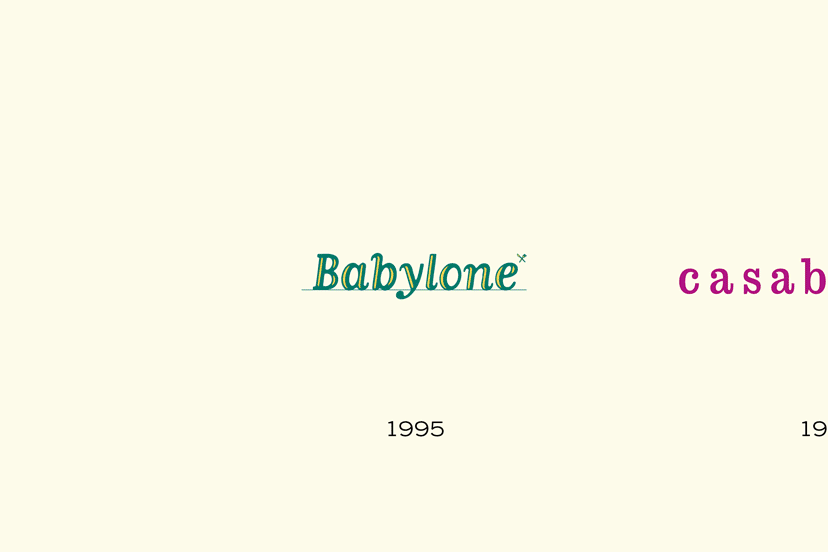Thought for Food
|
Our take on branding restaurants
|
By: Ahmad Gharbieh
"Thought for Food", the twist on the common expression – granted, a little obvious – is more than just wordplay. After considerable experience in branding restaurants, it becomes clear that working for the food service industry merits a particular way of thinking. And a good think is almost as enjoyable as a good bite.
Since the early nineties, with its newly found peace, Lebanon has been hungry for inventive concepts in the service industries it is so famous for. Today, after fifteen years of unprecedented rise in the number of bars, restaurants and cafés in the country, Lebanon has proven to be a fertile ground for the market, with an appetite for new ideas that seems to be growing by the day (all puns fully intended).
What is particularly interesting about branding within this domain for an extended period of time – aside from the abundant gulps, generous mouthfuls and all things indulgent of course – is the way trends change, exposing a traceable development in the industry. Trends in type of venue – think of the typical Gemmayzé bar, Lebanese restaurants with a twist, fusion food, sushi, sushi and more sushi – and trends in branding alike, emerge as testimonies to what the masses are liking at a given moment and, more importantly, to how designers are deciding what that will look like.
Sometimes trends are set without any intention to do so. Some of Mind the gap’s work in local restaurant branding stands as an example. Designing at the mercy of the trend, on the other hand, is like walking on quicksand: a futile endeavor, both risky and pointless. Trends are deceptive little bastards. They wear out almost as quickly as they are ‘in,’ and leave you where you started: searching desperately for that novel idea, that new hot thing. They also leave behind countless trend-following attempts that linger imposingly on the scene, extending their strangulated imitations well beyond their expiry date.
An important distinction has to be made here. An unwillingness to go down the fashionable path in branding for the food service industry is not some kind of identity-differentiating strategy. In fact, that take on uniqueness is precisely what we are challenging: the urge to be different, rather than the need to be distinct. The hidden truth that runs through the grain of most prevailing trends is that they are prefabricated ideas that, while deployed by many, still manage to make you feel special. But for how long?
The key to avoiding the trend-follower trap lies in identifying, establishing and maintaining a notable distinctiveness. The obsession with trends has to be replaced with a curiousity towards pre-established visual codes.
The codes within the food service industry – as well as most other industries – act as recognition markers and have visual translations that quickly become established in public consciousness. It takes time and toil for one of these visual configurations to become an instituted ‘classic’. It would be a shame not to both appreciate and build upon the fruits of this pattern of visual identity, this history.
As opposed to dwelling on what can be called ‘creative’ or desperately looking for ideas outside of a hypothetical box, one of the first decisions to establish when conceiving of an idea is the position of the project’s identity vis-à-vis the code; the code can be conformed to, broken, or anything in between.
There is nothing more charming than a little Chinese restaurant with hanging red lanterns and flying dragons everywhere. Sure, there are many like it around the world, but each and every one of these places is distinct, even memorable, simply because it is not trying to be something other than itself. Obviously, pastiche-like work is not our thing. Interestingly, a place that breaks a code as familiar and recognizable as the Chinese lanterns has an equal chance at truthfulness.
There is a theory, and it’s twofold. Firstly, one is better off positioning a restaurant or similar enterprise within (or at least in response to) a particular operational tradition, which will necessarily have an equivalent graphic tradition as a visual translation; and secondly, if the positioning depends on some fleeting fashion, the branding that follows will not be enough to flesh out what is already hollow. Branding is not to be seen as the primary defining factor of any operation. Carrying too much weight makes it crumble. It is not a solve-all magic wand that miraculously elevates the status of a place despite its me-too offering, awkward staff, predictable setting, or plain old bad burgers.
It’s simple: something genuine has to be proposed in order for authenticity to take shape around it.
A slightly different version of this article was originally published in Hospitality News Magazine. The article has been revised by the author.
Unless otherwise stated, all texts, images and audio-visual material are copyright © Mind the gap – Beirut



